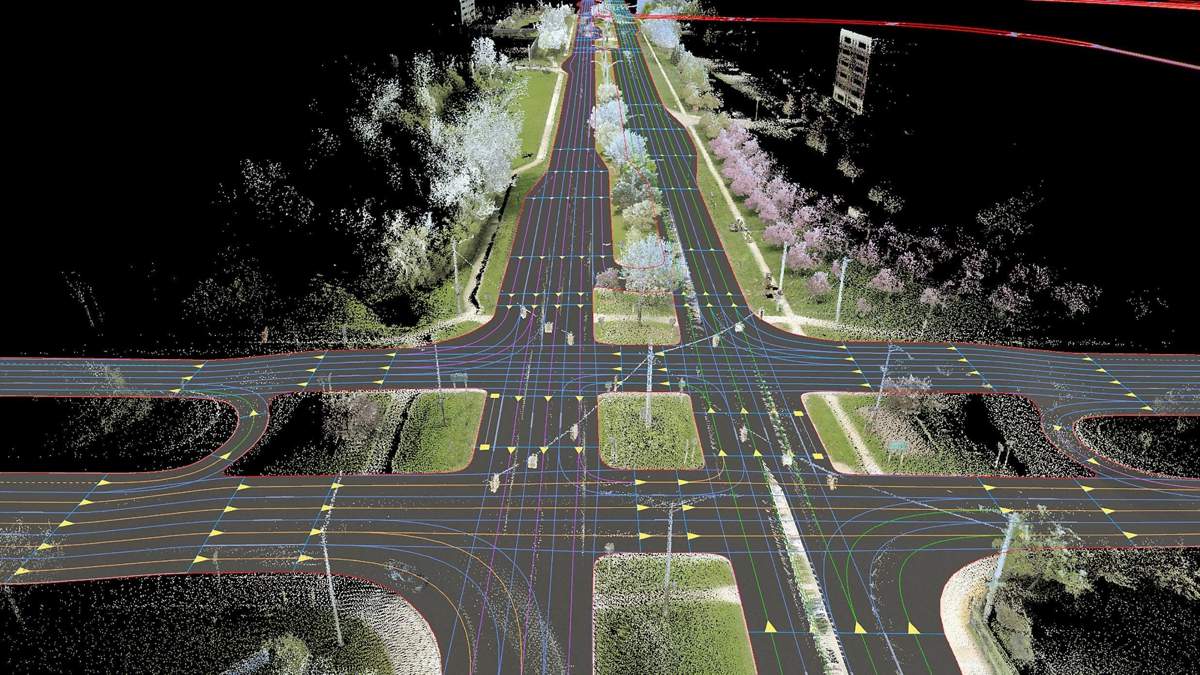Audi mobilises Swarm Data to create Intelligent Mobility
Audi is taking another step towards safer and more intelligent mobility by using high-precision swarm data for the first time to optimise the speed and accuracy of hazard warning communication between its networked models.
Its upgraded car-to-X service “Local Hazard Information” (LHI) now uses a car-to-cloud application that can estimate the coefficient of friction on a road surface on the basis of wheel slip. The application can detect the tiniest changes in road surface adhesion, upload data to the cloud for processing, and warn upcoming drivers of road ice or other slippery conditions in near real time.
Since 2017, Audi models have been able to warn each other about accidents, broken down vehicles, traffic jams, road ice, or limited visibility, a communication technology known as ‘car to X’. It analyses various data for Local Hazard Information, including activation of Electronic Stabilisation Control (ESC), rain and light sensors, windscreen wipers, headlights, emergency calls, and airbag triggers.
Audi is now taking the next step by improving the service with high-precision swarm data to make the warning even faster and more precise. The brand with the four rings is the first manufacturer to use a patented solution from Swedish company NIRA Dynamics AB for this purpose. The two companies adapted this solution as a basis to develop the enhanced hazard alerts together with the Car.Software organization and HERE Technologies.
Within the car, the system can estimate the coefficient of friction between the tyres and the road surface based on wheel slip. To calculate this, it uses chassis signals, such as wheel speed and acceleration values. It is already active in normal driving situations and not only during extreme situations when chassis control systems intervene. The sensor data is anonymised, both in the car itself and when transmitted to the cloud hosted by NIRA Dynamics AB.
Aggregated data from many vehicles are then combined with metadata, such as current and historical weather information, and then transmitted by NIRA cloud to service provider HERE Technologies. When integrated with HERE location platform, the combined data intelligence represents the road network as a precise three-dimensional model.
Coming back to the vehicle, HERE servers send the warning information to those cars that are in or heading toward areas with poor conditions. The driver sees a warning in the Audi virtual cockpit or on the optional head-up display and can act accordingly.
Number of vehicles involved is a key success factor
The greater the number of vehicles that deliver the data, the better the system can learn, analyse, and create maps, and thereby inform or warn the drivers depending on the situation. This is the basic principle of swarm data and swarm intelligence – an area in which Audi has acquired extensive knowledge over the past years.
In 2021, more than 1.7 million vehicles from the Volkswagen Group in Europe will contribute data for this improved hazard information service, and this will increase to more than 3 million in 2022, creating a significant competitive advantage. The service is available in new models from Audi, Volkswagen, SEAT, Škoda, Porsche, Bentley, and Lamborghini.
The Car.Software organisation, a company of the Volkswagen Group, took the main responsibility for development. The project was designed so that the greatest number of drivers possible could benefit from these safety advantages, regardless of the group brand. This is also the first customer application in which vehicle data is applied to this type of cutting-edge data analysis.
“The project for improved hazard information is a good example of the great potential of cross-brand software development. Together with other Group brands and our strategic partners, we were able to develop a digital service within a few months while making use of our own software skills and economies of scale,” says Thomas Müller, Head of Advanced Driving Assistance Systems ADAS & Automated Driving AD at the Car.Software organisation. “The improved hazard information service is just the beginning; we see wide-ranging potential for the future.”
Utilising current friction coefficient maps based on this data pool, municipalities can optimise their snow clearing service in real time, and also reduce the environmental impact by using less road salt. Driver assist systems can precondition themselves and adjust to the condition of the road with even greater precision, and the route guidance of the navigation system can take the road conditions into account in order to offer a more accurate computation of the expected time of arrival.
Inside the car, control of the wheel slip can enable the development of tyre maintenance services, for example, by detecting the level of wear as well as the performance level of the tyre.




















